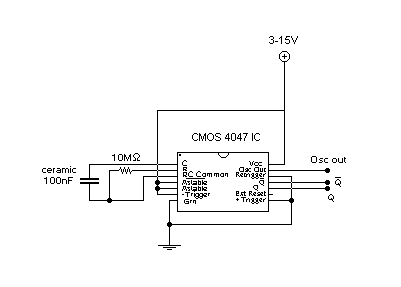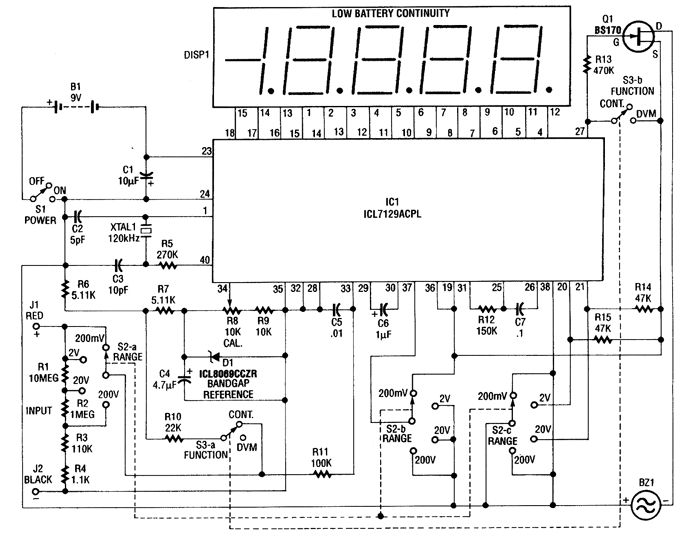
digital book cricket project

The project described is a digital implementation of the book cricket game, which is commonly played by Indian students during their childhood. The core component of the project is an 8-bit microcontroller from the AVR family known as the ATtiny85. ATtiny85 microcontrollers are compact and cost-effective, making them suitable for executing simple programs with a low resource footprint. The software used for programming the microcontroller is Arduino, a widely-used open-source integrated development environment (IDE). The overall design prioritizes simplicity and user-friendliness. Key components in the circuit include a 16x2 LCD for displaying characters across two lines with a maximum of 16 characters per line, a serial-in parallel-out shift register (HEF4094), the ATtiny85 microcontroller, two push buttons, and a 7805 voltage regulator to maintain a supply voltage of up to 5 volts. The HEF4094 shift register is employed to minimize the number of connections needed to the LCD, reducing the required connections from seven pins to just three wires. To initiate the game, random numbers must be generated. This is achieved by leaving the ADC channel of the ATtiny85 floating, which generates noise. The modulus 10 value of this noise produces integers ranging from 0 to 9. The two push buttons serve as user input controls: one functions as a RESET switch to restart the microcontroller, while the other acts as a HIT switch for game calibration and play.
The digital implementation of the book cricket game utilizes a straightforward yet effective circuit design, leveraging the capabilities of the ATtiny85 microcontroller. The choice of the ATtiny85 is strategic due to its low power consumption and adequate processing power for handling the game logic. The Arduino IDE facilitates easy programming and allows for rapid prototyping and testing of the game functionalities.
The 16x2 LCD serves as the primary user interface, providing clear visual feedback to the player. The use of the HEF4094 shift register is a significant design choice, as it allows for a reduction in the number of connections required for the LCD. This not only simplifies the wiring but also enhances the reliability of the circuit by minimizing potential connection errors.
The random number generation mechanism using the floating ADC pin is an innovative approach that exploits inherent electrical noise, providing a simple method for generating game outcomes without the need for additional hardware. This method ensures that the game remains unpredictable and engaging for players.
The two push buttons are essential for user interaction. The RESET button allows players to restart the game easily, while the HIT button initiates gameplay actions, allowing players to engage with the game mechanics effectively. The inclusion of the 7805 voltage regulator ensures that the microcontroller and other components receive a stable 5V power supply, which is crucial for maintaining consistent operation throughout the game.
Overall, this project exemplifies a blend of simplicity and functionality, making it an excellent educational tool for demonstrating fundamental concepts in electronics, programming, and game design.The project described here is a digital implementation of book cricket game which Indian students normally use to play in their childhood time. The heart of the project is 8 bit MCU from AVR family called ATtiny85. ATtiny85 are small and cheap microcontrollers which are convenient for running simple programs with low footprint.
The software use d for programming the MCU is Ardunio which is a popular open source IDE. The overall design is kept to a least for simplicity and ease to use. The main components used in the circuitry are 16X2 LCD which is used to display the characters in 2 lines with maximum of 16 characters in one line, a serial in parallel out shift register HEF4094, ATtiny85, 2 push buttons and 7805 voltage regulator which regulates the voltage supply to maximum of 5 volts. Shift register HEF4094 is used because normally when LCD is used it requires 7 connections to the pins on the display.
But if shift register is used the number of connections to the MCU can be reduced to only 3 wires. Before starting with the game some random numbers are required. These random numbers can be generated by keeping the ADC channel of the ATtiny85 floating, which means no connection the pin. So that noise is generated and by using the mod 10 value of the noise, integers from 0-9 are generated.
2 push switches are used to handle the input from the user. One is RESET switch which is used to reset the MCU and the other is HIT switch through which all the calibration and playing is done. 🔗 External reference
The digital implementation of the book cricket game utilizes a straightforward yet effective circuit design, leveraging the capabilities of the ATtiny85 microcontroller. The choice of the ATtiny85 is strategic due to its low power consumption and adequate processing power for handling the game logic. The Arduino IDE facilitates easy programming and allows for rapid prototyping and testing of the game functionalities.
The 16x2 LCD serves as the primary user interface, providing clear visual feedback to the player. The use of the HEF4094 shift register is a significant design choice, as it allows for a reduction in the number of connections required for the LCD. This not only simplifies the wiring but also enhances the reliability of the circuit by minimizing potential connection errors.
The random number generation mechanism using the floating ADC pin is an innovative approach that exploits inherent electrical noise, providing a simple method for generating game outcomes without the need for additional hardware. This method ensures that the game remains unpredictable and engaging for players.
The two push buttons are essential for user interaction. The RESET button allows players to restart the game easily, while the HIT button initiates gameplay actions, allowing players to engage with the game mechanics effectively. The inclusion of the 7805 voltage regulator ensures that the microcontroller and other components receive a stable 5V power supply, which is crucial for maintaining consistent operation throughout the game.
Overall, this project exemplifies a blend of simplicity and functionality, making it an excellent educational tool for demonstrating fundamental concepts in electronics, programming, and game design.The project described here is a digital implementation of book cricket game which Indian students normally use to play in their childhood time. The heart of the project is 8 bit MCU from AVR family called ATtiny85. ATtiny85 are small and cheap microcontrollers which are convenient for running simple programs with low footprint.
The software use d for programming the MCU is Ardunio which is a popular open source IDE. The overall design is kept to a least for simplicity and ease to use. The main components used in the circuitry are 16X2 LCD which is used to display the characters in 2 lines with maximum of 16 characters in one line, a serial in parallel out shift register HEF4094, ATtiny85, 2 push buttons and 7805 voltage regulator which regulates the voltage supply to maximum of 5 volts. Shift register HEF4094 is used because normally when LCD is used it requires 7 connections to the pins on the display.
But if shift register is used the number of connections to the MCU can be reduced to only 3 wires. Before starting with the game some random numbers are required. These random numbers can be generated by keeping the ADC channel of the ATtiny85 floating, which means no connection the pin. So that noise is generated and by using the mod 10 value of the noise, integers from 0-9 are generated.
2 push switches are used to handle the input from the user. One is RESET switch which is used to reset the MCU and the other is HIT switch through which all the calibration and playing is done. 🔗 External reference





